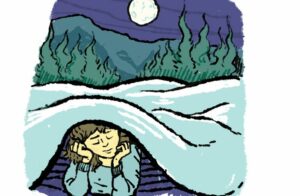 How Mental Heath Stigma & Seasonal Depression Affect Students
How Mental Heath Stigma & Seasonal Depression Affect Students
As the semester draws to a close, students, faculty and staff are likely feeling the stress of final exams and projects. It is common to experience fatigue and anxiety while cramming work into the final weeks of the semester. But for many people, Seasonal Affective Disorder (SAD) worsens their mental stress as the weather gets colder and the days get shorter, along with the stress of finals week.
SAD is a type of depression that occurs seasonally, typically in the winter or fall. Though the root cause of SAD is unknown, it has been correlated with decreasing sunlight and is more common at higher altitudes and places with cloud cover for extended periods of time. According to the American Academy for Family Physicians, 4-6% of Americans have what is known as “winter depression” while an estimated 10-20% have mild SAD symptoms. Additionally, it is four times as common in people who are female and becomes more prevalent at 20 years old and less prevalent as one gets older. As its symptoms generally align with that of other types of depression, the consequences on students — most of whom are in the age range of SAD development — can be very harmful.
The stress and possible sleep deprivation around the last weeks of a semester can have their own serious impacts, and it can be difficult to differentiate between those and the symptoms of SAD.
“If the person cannot tell the difference between anxiety and depression (which is not uncommon), the person should seek counseling,” Roberto Refinetti, a Boise State psychology professor wrote in an email. “For college students, this can be as simple as going to the student health center.”
Laura Campbell is a licensed clinical professional counselor and care coordinator at the Boise State University Health Services Counseling Center. Campbell said while there is no data around seasonal increases specifically, the Counseling Center’s services are used more as semesters progress, and many of the ways of managing mental health generally apply to managing SAD symptoms, including seeking help.
“In terms of protecting against it, staying on top of your mental health and physical health in general with enough sleep, good nutrition, regular check-ups, exercise, healthy social connections and good stress management tools is always a great foundation,” Campbell said. “That said, while all those things are really important for good mental health, they are not always sufficient to prevent depression.”
Aside from simply waiting for the seasons to change, frequent light therapy is one of the few treatments known to aid individuals with SAD. Light therapy entails exposure to broad-spectrum light that stimulates all of the photoreceptors in the eyes. This form of therapy may be approved by a doctor and used daily.
“Light has the benefit of not involving the use of medication, but all treatments for depression are terribly slow (at least from the point of view of the patient), which means that a doctor should monitor the progress of the treatment,” Refinetti wrote.
With such wide prevalence and in an area many young adults call home, universities must offer help to individuals struggling with mental health, including SAD. Refinetti said that once people understand SAD, that at least gives an opportunity to pursue help.
The stigma around mental health may present barriers for individuals to seek help, but Campbell said the reframing of mental health is an important part of her work.
“Hopefully, we are getting the message out there that help-seeking is a sign of strength rather than something to feel even more badly about,” Campbell said.





